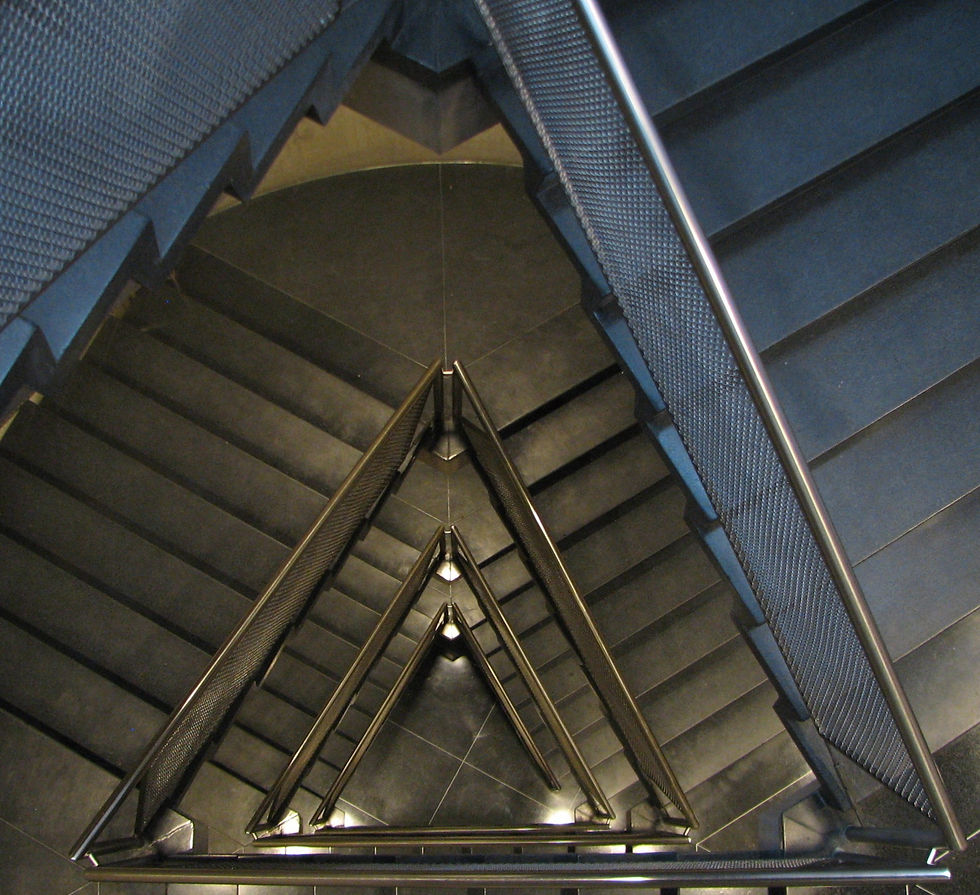Louis Kahn- artist research
- Souleymane Avice

- Mar 17, 2021
- 4 min read

Louis Kahn was a very influential American architect, with a style that was unlike any other, and unfortunately because of that he was not a very successful architect, not only in terms of his firm not be economically sound but also in terms of the amount of project he built. I think it’s really saddening that there are only so few of his buildings around, however the ones that are around are fantastic in my opinion. Like Tadao, Kahn was a master of the concrete light combo, after all he was one of the architects that influenced Ando. Besides the concrete and light Louis also used a lot of brick, a material he made clear was more than a basic building material in his “even a brick wants to be something” speech. Kahn’s take on the modernist movement differed a lot to others, his buildings did not hide anything, the weight of the structure was present, and the materials and their imperfections left on show. Compared to an architect like Mies van der Rohe who is very clean, minimal, subtle and whose building seem light and transparent; Kahn’s buildings are a lot less polished and have an opposing presence in comparison. He was inspired by ancient Greek and Egyptian ruins and that can clearly be seen Kahn’s buildings were very much monumental too, and his very bold usage of big shapes helped as well. Kahn really focused on creating a strong distinction between the servant and served spaces, a distinction that hadn’t been made before. A served space refers to a space that is commonly used and meant for people like living room, bedrooms classrooms, etc, whereas a servant space refers spaces that aid or serve the main rooms. These are places that are not meant to be habituated, they may include staircase, kitchen, technical rooms etc. At least that’s what I’ve understood so far. But this was an important contribution to architecture as a whole because without this distinction planning a modular or practical building would be a lot more difficult, with this distinction you are able to group them, or layer them so that it makes for an easier build. This was part of Kahn’s design philosophy. He had a strong emphasis on those served spaces, “the room is the place for the mind” and “a room is not a room without natural light” these ethos are clear in his projects. Kahn did not only innovate in the theory aspect, but also the technological aspect. With his Yale University Art Gallery Kahn eliminated the need for ductwork by having the air be channelled within the structure itself. In the “My Architect” documentary architect Philip Johnson says “he was his own artist. He was free, compared to me." When talking about Louis. This being an “artist” and freedom is I think what costed him a very delayed recognition as one of the most significant architects of his time and ever. People didn’t understand his visions, so a lot of his buildings were never commissioned; however, after a trip to Europe looking at medieval structures, walled cities and castle Kahn came back and his new revised vision lead him to get recognised a lot more, even thrive until his untimely death at 73 in 1974. In that time span of 1950-1974 Kahn created work that finally worked for people, his drawings were developed, and we finally got to see his ideas materialised. His work was welcomed by audiences and the people who commissioned the projects. In a very emotive segment of the “My Architect” documentary an Shamsul Wares, an architect, explains just how impactful his Bangladesh parliament house was, yes it was a beautiful building, a building of a scale that was impossible for a country like Bangladesh at that time, but beyond that he explains that it allowed for democracy something that didn’t exist before, Kahn gave them something truly meaningful something beyond the aesthetic where the critic’s and connoisseur’s opinion just didn’t mean anything compare to what it meant to these people, and I just found that beautiful. An architect that I find similar to Kahn would be Tadao, I have previously mentioned him and what they share is this honest use and portrayal of their materials coupled with a beautiful control of light to create these spiritual spaces. What I want to take from Kahn and apply to my own project is his decision to look back in the past, there is so much to be inspire by and learn from these old structures. I also think that having the ability to understand the past and apply to new designs is innovative in a way. I also will research further on his served and servant rooms and try to apply that, I like the idea of the main rooms disconnected from these inhabitable places, so that these served rooms can be fully focused on the people. I however love the implication of stairs within a liveable room, so I’ll see how I interpret his concept.
Yale University Art Gallery- 1953

The Salk Institute- 1965


Phillips Exeter Academy Library- 1972


Kimbell Art Museum- 1972

Jatiyo Sangshad Bhaban- 1983



Franklin D. Roosevelt Four Freedoms Park- 2012



Comments